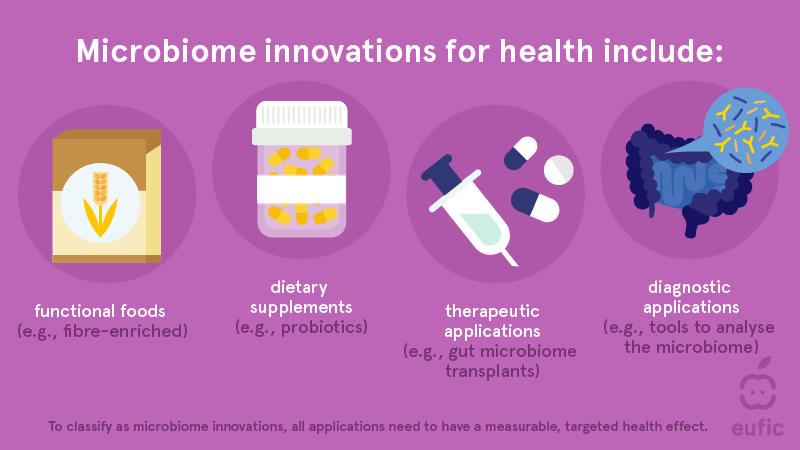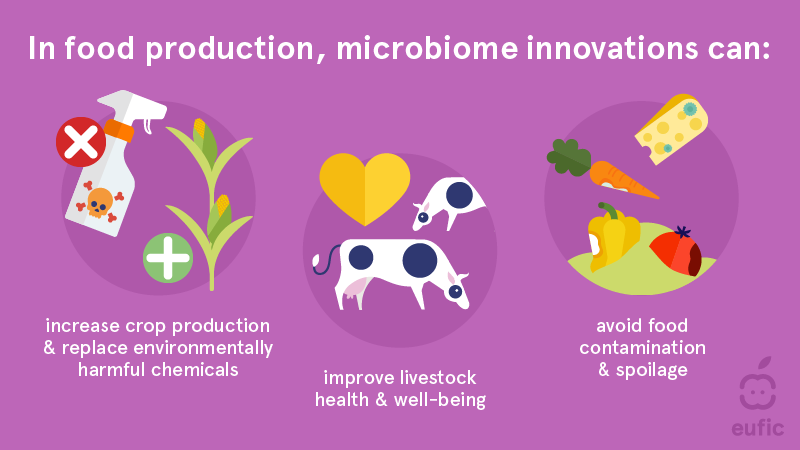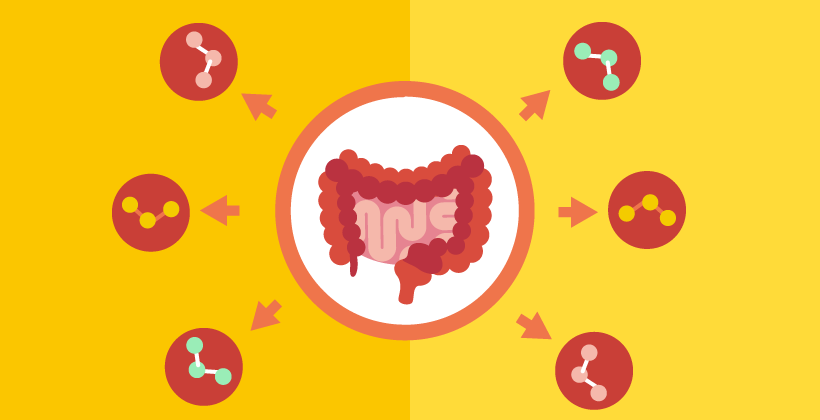Microbiome innovations drive sustainable food production and human health
Last Updated : 02 November 2022They are tiny, invisible, and yet so powerful. We are talking about microbiomes, the communities of microorganisms that inhabit almost every conceivable environment. Microbiomes have a tremendous impact on our lives without us even being aware of them most of the time. Not only do they play a vital role for our health, but also for that of our ecosystems. As our knowledge of the ‘micro-world’ deepens, we are witnessing more and more products, tools and other innovations resulting from microbiome research entering the market. These innovations will become increasingly important in the future, as they hold the promise of helping us solve some of the major challenges of the 21st century, from mitigating climate change to ensuring food supply and combating common human diseases.
We are surrounded by microbiomes
You may have heard about microbiomes before. However, having never caught a glimpse of these microscopic organisms, they are easily forgotten. Rest assured, this is true for most of us. Yet our increased understanding of the gut microbiome and its importance to human health have prompted a growing interest in the microbiome around the world. But microbiomes go far beyond the gut. These communities of microorganisms - comprising bacteria, archaea, unicellular eukaryotes, fungi and viruses1 - also exist in and on animals, on land and in the sea, in soils, plants and waters. They form an essential part of the environments they inhabit, and as such, are crucial to their functioning and health.
Using microbiomes to achieve a circular bioeconomy
By studying microbiomes and the environments in which they live (together they form so-called ‘ecosystems’), researchers are gaining an increased understanding of the functioning of these ecosystems and, more interestingly, how microbial functions could be used to our advantage. We see ever more microbiome-based solutions being developed, helping us to manage our planet’s limited resources in such a way that we can obtain food, energy and other goods using few and mostly renewable natural resources, including from waste streams. This concept is also referred to as the circular ‘bioeconomy’, or ‘bio-based economy’2 and is closely linked to the Sustainable Development Goals (SDGs) of the United Nations.3 Microbiome research has opened an important window of opportunity for the bioeconomy approach. It offers very practical solutions that have great business potential and could benefit the well-being of our society, for instance, by supporting food security, reducing the threat of antimicrobial resistance and benefitting our health. In light of this, it comes as no surprise that microbiome research is also attracting the attention of policymakers and the industry.
Microbiome innovations
What does it mean then in practice to savour the knowledge and potential of microbiomes? Multiple applications are rising from microbiome research, to which we often refer as ‘microbiome innovations’. These can come in the form of a product, methodology, tool or process that is based on the activity of microbial communities. In particular, in the sectors of health and food production, there is a growing trend toward microbiome innovations.
Generating microbiome-knowledge to improve human health
Today we know that the gut microbiome is an essential part of our body and guides our immune system, metabolism and even our moods and behaviors.4 This fairly new knowledge has opened up entirely new avenues for the treatment of diseases. Innovative microbiome applications have created a gigantic market ranging from functional foods (e.g., foods enriched in prebiotic fibres and/or probiotic bacteria) to dietary supplements (e.g., probiotic capsules or powders) and therapeutic applications (e.g., gut microbiome transplants).5 Have you ever heard about the term ‘psychobiotic’? This new type of probiotic is being tested to help patients suffering from mental illnesses, with promising results.6 Recently, there has also been a renaissance of fermented foods (e.g., pickles, kefir, yoghurt, sourdough bread) due to their potential health benefits.7 Another relatively new health trend are microbiome testing kits. Buyers of such kits may not only get an analysis of the bacteria community living in their gut but also tailored dietary and health recommendations based on the test results. However, considering that there is a lot we don’t know yet about the microbiome, for example on the role of specific microbial species in our gut and that the technology for analysing microbiomes is still in its infancy, the results of such tests should be interpreted cautiously.
Furthermore, given our current knowledge, we cannot define what a ‘healthy’ microbiome is, and it is still unclear whether such a definition may ever be possible.8 It is not until we study the gut microbiome of people in larger studies over several months or years and observe how it changes in response to age, disease, diet and other lifestyle factors that we will be able to make specific health recommendations with regard to microbiomes. Lastly, and perhaps in a not-too-distant future, researchers will be able to develop ‘smart’ microbes that perform desired tasks, such as combating lurking pathogens, diagnosing early stages of diseases, and delivering drugs to specific parts of our body.9 This research field, which we refer to as ‘microbial engineering’, in fact already exists, yet still needs further development to guarantee the safe use of such manipulated organisms. So let’s be patient, and rest assured that science will continue its intense investigations into ‘bugs as drugs’.

Enhancing sustainable and safe food production through microbiomes
Also in the areas of agriculture and food production microbiome innovations could be our silent heroes, helping us to provide the world's population with sufficient and healthy food, and to do so in a sustainable manner. For instance:
- Microorganisms are already being successfully applied in farming as biofertilizers. As such, they supply the plant with essential nutrients, thereby contributing to the flourishing of crops and higher yields for farmers. At the same time, they replace chemical fertilizers, which are detrimental to the environment, as they emit greenhouse gases and pollute groundwater when being decomposed.
- In livestock and aquaculture production, adding microorganisms to animal feed is a common practice to improve the nutritional quality of the feed, resulting in healthier, more productive animals.
- In food production and processing facilities, new analytical methods are being applied to identify microbial communities along the production chain, allowing food producers to better track hazards coming from pathogenic, unwanted microorganisms and take appropriate food safety measures.

Microbiome research: We are better off together!
One of the next major milestones in microbiome research will be the advancement of analytical tools that will allow us to better characterise microbial species found in specific environments and what functions they perform there (their ‘theatre of activity’, as scientists call it). This knowledge could help us to design further, more effective and accurate microbiome technologies. Because these tools mostly rely on computer models, microbiologists will need to collaborate increasingly with bioinformaticians and data scientists or be trained themselves in these disciplines. Finally, those putting these technologies into practice - the farmers in the field, the food producers and safety managers, the doctors and healthcare professionals - they, too, need to know the drill. Other hurdles that need to be overcome include increasing international cooperation to disseminate the knowledge, align research methods and coordinate funding. Also, microbiome-friendly legal frameworks need to be created that facilitate the approval of new microbiome products and allow rapid market access.
Seeking to address these and other issues and drive innovation in the microbiome field, the EU-funded MicrobiomeSupport project was launched in 2018. Among the main outcomes of the project over the past 4 years are:
- Proposing an up-to-date definition of the term ‘microbiome’ (so all microbiome professionals speak the same language)
- Recommending standard research approaches (so we can compare results of different studies)
- Defining gaps in research (so we can guide on the needs to be financed next)
- Outlining education needs for schools, universities and professionals (so we can equip future microbiome-specialists with the necessary skills)
- Increasing public awareness and knowledge about microbiomes (so we all understand how microbiomes are affecting our daily lifes and are aware of potential innovations in this field)
Although the project is coming to an end this year, the future of microbiome research looks bright. After all, efforts and interest to improve our understanding of the fascinating micro-world are not lacking. Nevertheless, we still have a lot of work to do, and so do microbes!
Have a look at the “Microbiomes in the Food System” infographic to learn more about where microbiomes occur in our surroundings.
 This project has received funding from the European Union’s Horizon 2020 research and innovation programme under grant agreement No 818116.
This project has received funding from the European Union’s Horizon 2020 research and innovation programme under grant agreement No 818116.
References
- Berg G, et al. (2020). Microbiome definition re-visited: old concepts and new challenges. Microbiome 8, 103.
- European Commission (2019). Food, bioeconomy, natural resources, agriculture and environment.
- Bio-based Industries Consortium (2018). Bioeconomy and the UN Sustainable Development Goals.
- Cresci G. A. & Bawden E. (2015). Gut Microbiome: What We Do and Don't Know. Nutrition in Clinical Practice 30(6): 734–746.
- Zhang Y, et al. (2022). Human Microbiome and Its Medical Applications. Frontiers in Molecular Biosciences 8: 703585.
- Sharma R, et al. (2021). Psychobiotics: The Next-Generation Probiotics for the Brain. Current Microbiology 78(2): 449-463.
- Bell V, et al. (2018). One Health, Fermented Foods, and Gut Microbiota. Foods 7(12): 195.
- Shanahan F, et al. (2021). The Healthy Microbiome - What Is the Definition of a Healthy Gut Microbiome? Gastroenterology 160(2): 483-494.
- Sonnenburg J. (2015). Microbiome Engineering. Nature 518: 10.


